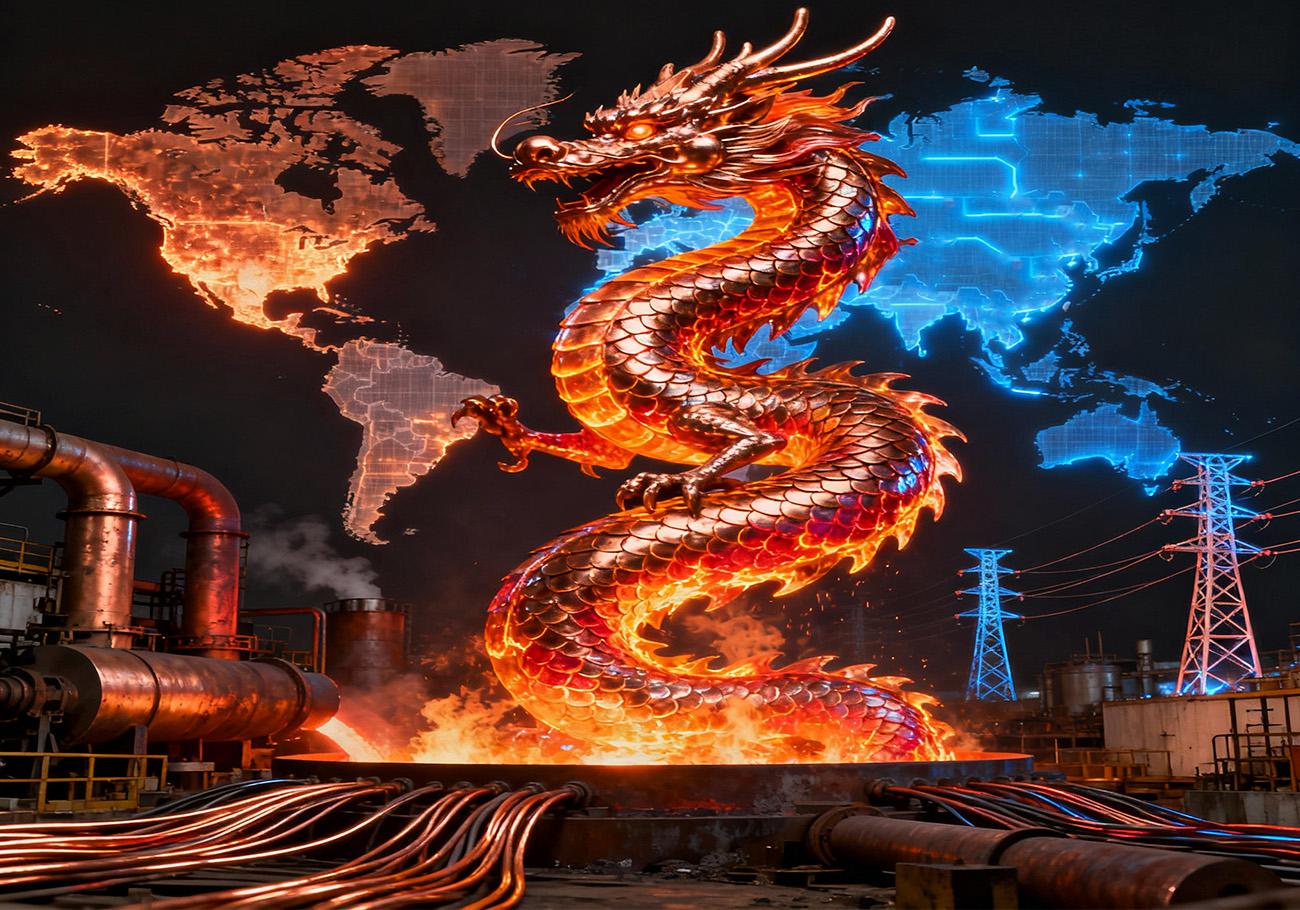






Copper is the third most consumed metal in the world after iron and aluminum. It plays a vital role in industrial society thanks to its unique properties: high electrical and thermal conductivity, malleability, ductility, and corrosion resistance. These characteristics make it indispensable in many sectors, including solar and wind energy systems, electric vehicles, transmission and distribution networks, construction, power generation, electronics, and telecommunications.
Artificial intelligence, electric vehicles, and clean energy may seem like industries of the future, but they all depend on one of the oldest metals: copper. AI data centers require copper wiring and transformers, as well as high-performance processing infrastructure. For instance, to supply the 16 gigawatts of power needed for AI data centers, 4 million tons of copper worth 3.2 billion dollars would be required. Electric vehicles use nearly four times more copper than gasoline-powered cars. Wind turbines, solar plants, and modern power grids all rely on it. Thus, copper is the construction material of the future economy and the foundation of any nation’s security.
In the United States, copper is the second most commonly used material by the Department of Defense and is an essential component in numerous defense systems, including aircraft, land vehicles, ships, submarines, missiles, and munitions. Copper also plays a central role across the broader U.S. industrial base. Its exceptional conductivity and durability make it irreplaceable in critical infrastructure sectors that support the American economy, national security, and healthcare. Alternatives to copper are often insufficient for these vital industries and products.
The technological chain of the copper industry can be divided into three segments: upstream, midstream, and downstream. These English terms describe the entire industrial process—from the initial upstream stage to the midstream and final downstream phases.
The upstream segment covers mining, smelting, and refining of copper ore to produce intermediate products such as anodes and cathodes. Midstream activities include casting and manufacturing semi-finished copper products into standardized forms (e.g., wire, rod, plate, strip, foil, tubes, and bars) for downstream consumers. Smelters use refined cathode copper as their main raw material, obtained either from ore or recycled scrap. Brass and rod mills accounted for nearly 85% of copper recovered from scrap in 2024. The downstream segment consists of producing and assembling finished products (derivatives), such as fuses and circuit breakers, switching devices, related components, and transformers.
The U.S. upstream copper segment remains modest in scale compared to world leaders, but American smelters benefit from reliable access to imported cathodes and an abundant domestic scrap flow. In 2024, U.S. mines produced 1.1 million tons of recoverable copper—about 5% of global production—ranking fifth worldwide. However, with only two primary smelters and two electrolytic refineries in operation, domestic processing capacity is limited.
The United States holds significant reserves of copper; full development of its mines would account for about 10% of global production. Yet, because of strict environmental and regulatory rules, permitting for a new mine takes an average of 29 years—second only to Zambia. As a result, only three new mines have opened in the U.S. since 2002. Additional challenges include high capital costs, long supply lead times, regulatory uncertainty, and declining ore quality, all of which increase expenses.
Imports ensure a stable supply of cathode copper needed by U.S. plants to produce rods, plates, sheets, and strips. In 2024, the U.S. imported 921,000 tons of refined copper, 70% of which came from Chile and 17% from Canada. These supply chains sustain the competitiveness of American manufacturers.
The midstream segment of the U.S. copper industry faces substantial competitive pressure. This stage involves various mills producing mainly rods, profiles, plates, sheets, and strips, as well as wire-drawing, extrusion, and foil-rolling mills. Over the past decade, these mills have struggled with rising imports that widened the trade deficit across different product types. Profit margins have fallen, customer bases have shrunk, and many producers have consolidated operations, closed unprofitable lines, and postponed capital investments.
The impact on U.S. copper mills has been severe. For example, Revere Copper—one of the few remaining integrated copper rolling mills—saw production volumes fall by 50% and its workforce cut by more than half between 1999 and 2016. Similarly, PMX Industries, despite investing in high-performance copper alloys, continues to struggle against cheaper imports and rising domestic energy costs.
Finally, the downstream processing segment of the U.S. copper industry—which includes production of copper-intensive electrical components such as busbars, connectors, and terminals—has steadily lost ground in recent years to Mexico and China. Together, these two countries accounted for nearly half of all U.S. imports of such goods in 2024. Imports from Mexico in particular have soared over the past decade, rising 85%, or by 57 billion dollars.
The U.S. remains heavily dependent on imports, which account for 42% of domestic refined copper consumption, and it operates only three smelters. Moreover, the country faces growing competition for resources from China, the European Union, and the United Kingdom, all of which are expanding their industries.
China, of course, holds a unique position among U.S. competitors because of its expanding industrial influence, which is evolving into global dominance. The United States faces multiple national security threats from China’s copper strategy. These concerns range from Beijing’s drive to control global copper supply chains to strategic investments across Southeast Asia and North America designed to evade U.S. tariffs, dump semi-finished copper exports into the American market, and influence world copper prices through its massive import volume. Furthermore, China’s long-standing strategy of multi-sector financing blurs the line between commercial and military applications, ensuring that investments in copper smelting, refining, and processing directly support the PLA. By embedding its copper companies into global supply chains and expanding control over processing capacities, China secures both commercial leverage and defense-related material supplies—raising risks for U.S. national security.
How exactly China is achieving global dominance in the copper industry—and how America is responding—will be explored in future articles.